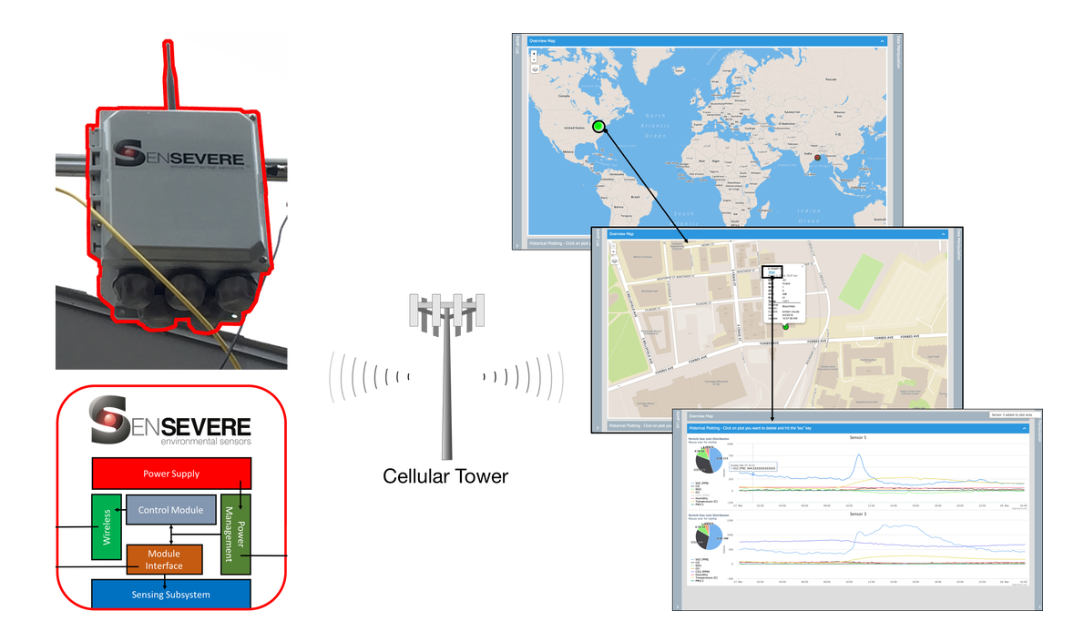
Air Quality Monitoring for Smart Cities: Municipal pollution targets, emissions reduction, and human health (Stage 1)
Polluted air can sometimes go undetected. And its harmful side-effects can wreak havoc on the human body. Have you ever wondered about the quality of air you breathe at home, at work, and in between? Do you bicycle to work for the exercise benefits (or want to!), but worry that it increases your exposure to air pollution?
The Real-time, Affordable, Multi-Pollutant (RAMP) air quality monitor measures carbon monoxide (CO), nitrogen dioxide (NO2), sulfur dioxide (SO2), ozone (O3), and fine particulate mass (PM2.5).
Since 2016, this project has deployed and operated a network of low-cost RAMP air pollutant sensors in Pittsburgh and surrounding Allegheny County. The RAMPs measure gas-phase (CO, CO2, O3, NO, NO2 and SO2) and particulate pollutants (PM2.5). Our dense sensor network provides real-time, neighborhood-level air pollutant data, and to the best of our knowledge is the largest long-term network of low-cost air pollutant sensors in the U.S.
Project Partners
SenSevere
https://sensevere.com/
Department of Mobility and Infrastructure, City of Pittsburgh
http://pittsburghpa.gov/domi/index.html
Project Team
Albert Presto, Project Lead, Associate Research Professor, Mechanical Engineering, Carnegie Mellon University
R (Subu) Subramanian, Research Scientist, Mechanical Engineering, Carnegie Mellon University
